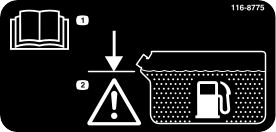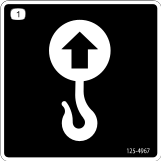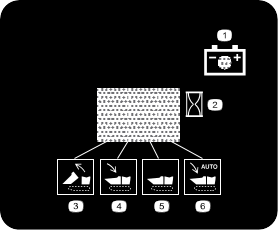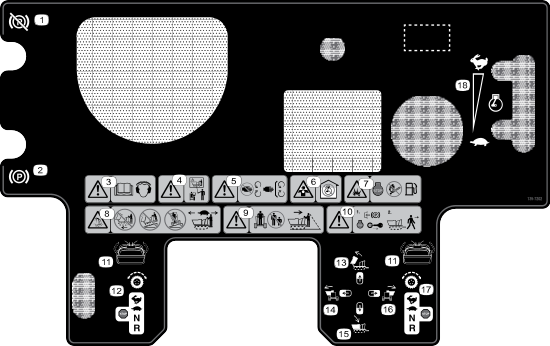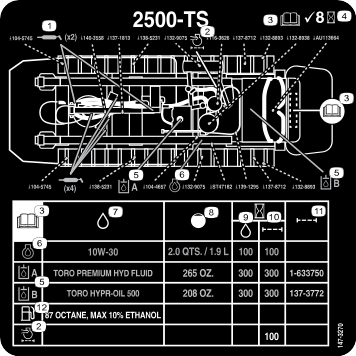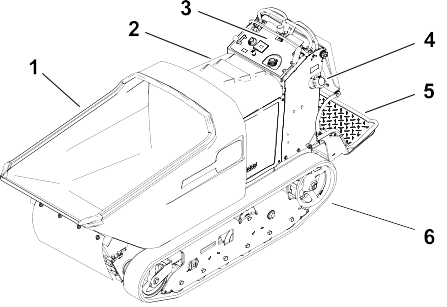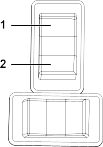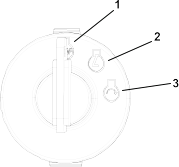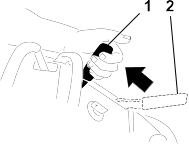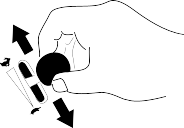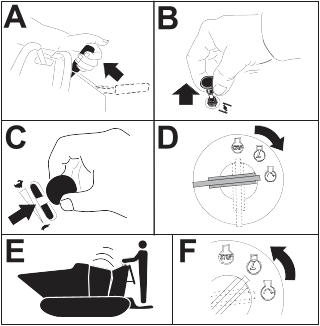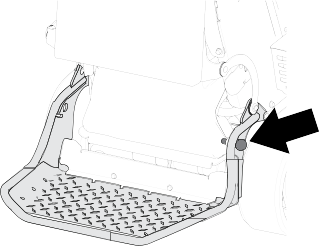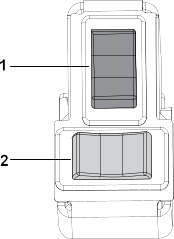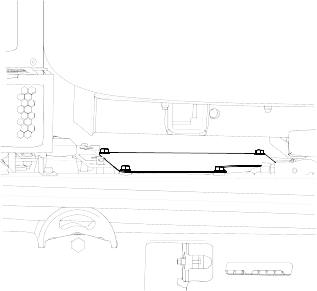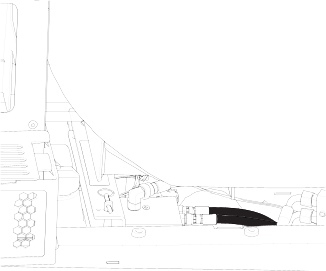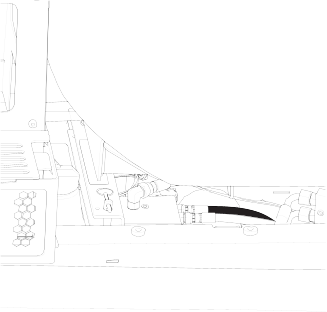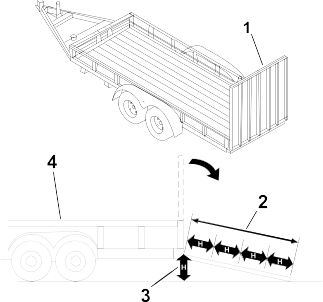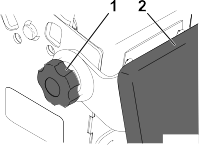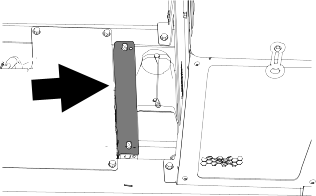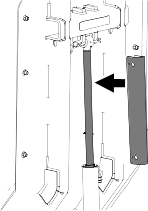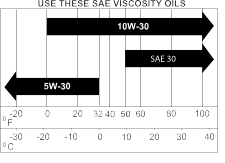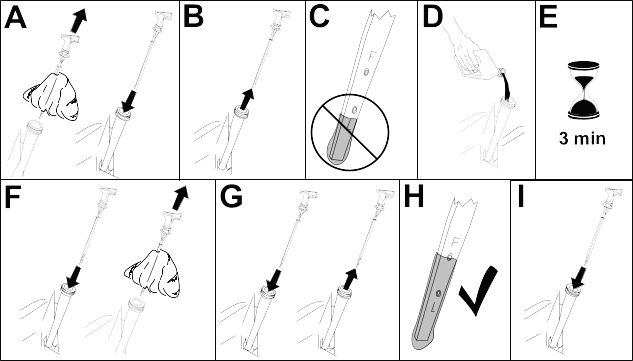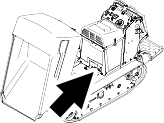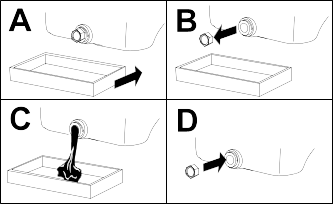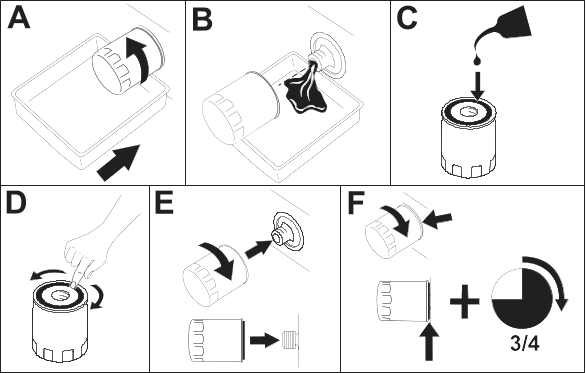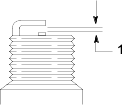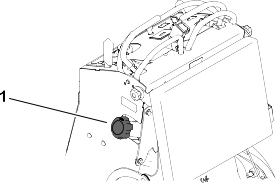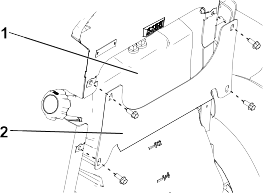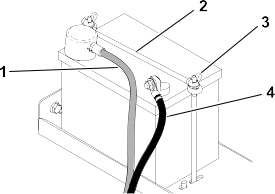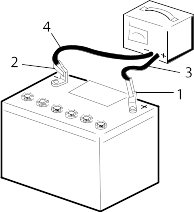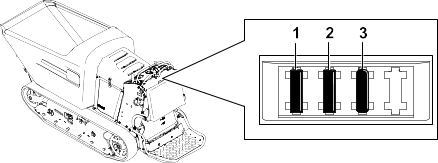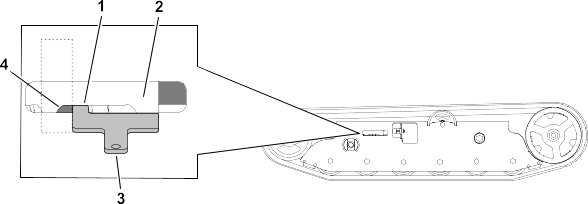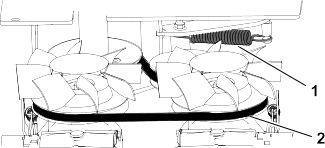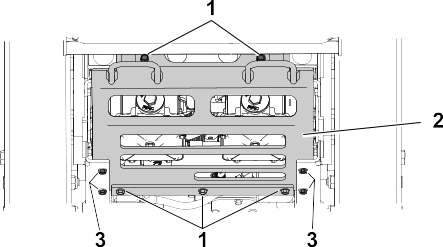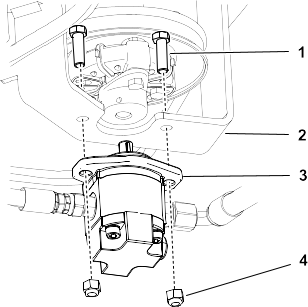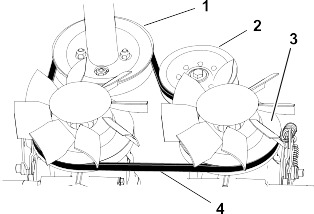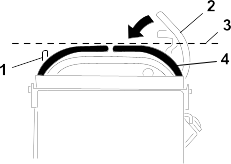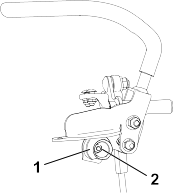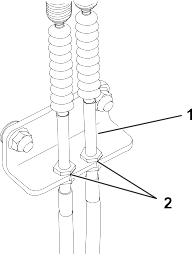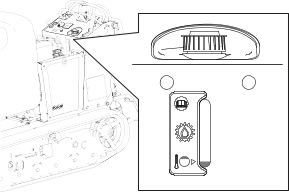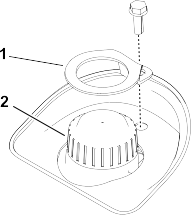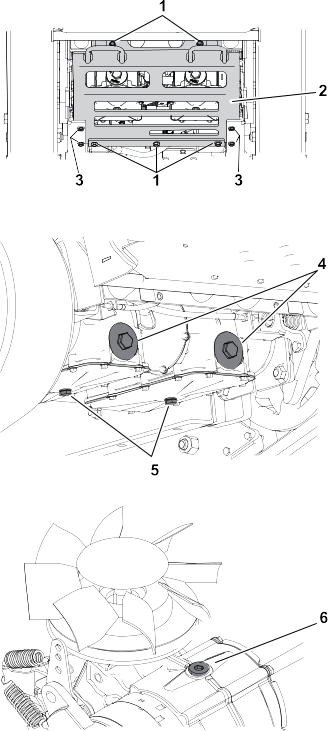Disclaimers and Regulatory Information
It is a violation of California
Public Resource Code Section 4442 or 4443 to use or operate the engine
on any forest-covered, brush-covered, or grass-covered
land unless the engine is equipped with a spark arrester, as defined
in Section 4442, maintained in effective working
order or the engine is constructed, equipped, and maintained for the
prevention of fire.
Because in some areas there are
local, state, or federal regulations requiring that a spark arrester
be used on the engine of this machine, a spark arrester
is available as an option. If you require a spark arrester, contact
your Authorized Service Dealer. Genuine Toro
spark arresters
are approved by the USDA Forestry Service.
The enclosed engine owner's manual
is supplied for information regarding the US Environmental Protection
Agency (EPA) and the California Emission Control
Regulation of emission systems, maintenance, and warranty. Replacements
may be ordered through the engine manufacturer.
 |
|
|
| CALIFORNIA
|
|
|
| Proposition
65 |
|
|
| The engine
exhaust from this product contains chemicals known to
the State of California to cause
cancer, birth defects, or other reproductive
harm. |
|
|
| Battery posts,
terminals, and related accessories contain lead and
lead compounds, chemicals known to
the State of California to cause
cancer and reproductive harm. Wash hands after handling. |
|
|
| Use of this
product may cause exposure to chemicals known to the
State of California to cause cancer,
birth defects, or other reproductive
harm. |
|
|
Introduction
Intended Use
This
machine is intended to be used by professional, hired operators in
commercial applications. This machine is a stable,
reliable, and productive machine for carrying and moving materials
for any job site. It is primarily designed to move concrete,
mortar, gravel, dirt, or debris around job sites. Using
this product for purposes other than its intended use could prove
dangerous to you and bystanders.
Read this information
carefully to learn how to operate and maintain your product properly
and to avoid injury and product damage. You are
responsible for operating the product properly and safely.
Getting Help
Visit www.Toro.com for product safety and operation
training materials, accessory information, help finding a dealer,
or to register your product. Whenever you need service, genuine Toro parts, or additional information,
contact an Authorized Service Dealer or Toro Customer Service and have the
model and serial numbers of your product ready. These numbers are
located on the serial plate on your product  . Write the numbers in the space
provided.
. Write the numbers in the space
provided. With your mobile device, you can
scan the QR code on the serial number decal (if equipped) to access
warranty, parts, and other product information.
|
Model Number:
|
|
Serial Number:
|
|
Manual Conventions
This
manual identifies potential hazards and has safety messages identified
by the safety-alert symbol, which signals a hazard
that may cause serious injury or death if you do not follow the
recommended precautions.
This manual uses 2 words to highlight
information. Important calls attention to special mechanical
information and Note emphasizes general information
worthy of special attention.
Safety Alert Classifications
The
safety-alert symbol shown in this manual and on the machine identifies
important safety messages that you must follow
to prevent accidents.
Safety-alert symbol appears above
information that alerts you to unsafe actions or situations and is
followed by the word DANGER
, WARNING, or CAUTION
.
 |
Danger |
 |
Danger indicates an imminently
hazardous situation which, if not avoided, will result in death or serious injury.
 |
Warning |
 |
Warning indicates a potentially
hazardous situation which, if not avoided, could result in death or serious injury.
 |
Caution |
 |
Caution indicates a potentially
hazardous situation which, if not avoided, may result in minor or moderate injury.
Product Overview
g038268
- Hopper
- Hood
- Control
panel
- Fuel-tank
cap
- Operator
platform
- Tracks
Controls
Choke Control
G376191
- Engage the choke before starting a cold
engine.
- Disengage the choke when the engine is
warm.
Dump Controls
G375675
- Dump
hopper
- Lower
hopper
Key Switch
G375755
- Stop
engine
- Run engine
- Start
engine
Swivel Switch
G375676
- Swivel
left
- Swivel
right
Specifications
Note: Specifications
and design are subject to change without notice.
|
Width
|
90.2 cm (35.5 inches)
|
|
Length
|
268 cm (105.5 inches)
|
|
Height
|
130.18 cm (51.25 inches)
|
|
Weight
|
855.5 kg (1886 lb)
|
|
Hopper capacity
|
0.45 m
3 (16 cu.ft.)
|
|
Maximum load
|
1134 kg (2500 lb)
|
|
Discharge height
|
38.1 cm (15 inches)
|
Attachments/Accessories
A
selection of Toro approved attachments and accessories
is available for use with the machine to enhance and expand its capabilities.
Contact your Authorized Service Dealer or authorized Toro distributor or go to www.Toro.com for a list of all approved attachments
and accessories. To ensure optimum performance
and continued safety certification of the machine, use only genuine Toro replacement parts and accessories.
Maintenance
Maintenance Safety
- Park the machine on a level surface,
engage the parking brake, and shut off the engine. Wait for all movement
to stop and allow the machine to cool before
adjusting, servicing, cleaning, or storing the machine.
- Disconnect the battery or remove
the spark-plug wire before making any repairs. Disconnect the negative
terminal first and the positive terminal last.
Connect the positive terminal first and negative last.
- Charge the batteries in an open,
well-ventilated area, away from spark and flames. Unplug the charger
before connecting or disconnecting it from
the battery. Wear protective clothing and use insulated tools.
- Battery acid is poisonous and
can cause burns. Avoid contact with skin, eyes, and clothing. Protect
your face, eyes, and clothing when working
with a battery.
- Battery gasses can explode. Keep
cigarettes, sparks, and flames away from the battery.
- Do not change the engine governor
setting or overspeed the engine.
- Support the machine with jack
stands whenever you work under the machine.
- Carefully release pressure from
components with stored energy.
- Keep all parts in good working
condition and all hardware tightened. Replace all worn or damaged
decals.
- Use the cylinder lock to secure
the hopper in the raised position.
- Never tamper with safety devices.
- To ensure safe, optimal performance
of the machine, use only genuine Toro replacement parts. Replacement
parts made by other manufacturers could be dangerous, and such use
could void the product warranty.
- Seek immediate medical attention
if fluid is injected into skin. Injected fluid must be surgically
removed within a few hours by a doctor.
- Ensure that all hydraulic-fluid
hoses and lines are in good condition and all hydraulic connections
and fittings are tight before applying pressure
to the hydraulic system. Keep your body and hands away from pinhole
leaks or nozzles that eject high-pressure
hydraulic fluid.
- Use cardboard or paper to find
hydraulic leaks.
- Safely relieve all pressure in
the hydraulic system before performing any work on the hydraulic system.
Recommended
Maintenance Schedule
| Before each use or daily
|
|
- |
- |
- |
|
|
- |
- |
- |
|
|
- |
- |
- |
|
|
- |
- |
- |
|
|
- |
- |
- |
|
|
- |
- |
- |
|
Check
for loose fasteners. |
- |
- |
- |
|
|
- |
- |
- |
|
After
the first 10 hours
|
|
- |
- |
- |
|
Every
25 hours |
|
- |
- |
- |
| Every
40 hours |
|
- |
- |
- |
| |
| |
| Every
50 hours |
|
- |
- |
- |
|
|
- |
- |
- |
|
|
- |
- |
- |
| Every
100 hours |
|
- |
- |
- |
|
|
- |
- |
- |
|
|
- |
- |
- |
|
|
- |
- |
- |
|
|
- |
- |
- |
|
Clean
the cooling areas under the cooling shrouds.
|
- |
- |
- |
|
|
- |
- |
- |
|
|
- |
- |
- |
| Every
300 hours |
|
- |
- |
- |
|
|
- |
- |
- |
|
|
139-1295
|
1 |
Belt |
|
|
108-1184
|
1 |
Toro
premium transmission/hydraulic fluid |
|
|
114-4714
|
2 |
Toro
hypr-oil 500 |
|
|
137-3772
|
2 |
Filter
|
|
|
1-633750
|
1 |
Filter
|
Pre-Maintenance Procedures
Moving a Non-Functional Machine
Do not tow or pull the machine
without first opening the bypass valves in this procedure, or you
will damage the hydraulic system.
Note: Opening
the bypass valves will ease moving the machine, but the tracks may
still skid due to their length and resistance.
-
If possible,
raise the hopper and install the cylinder lock.
-
Shut off
the engine and remove the key.
-
Using a wrench,
turn the bypass valve on the left and right transaxles so that the
flat sides of the valve face left and right
(Tow position  ).
).
-
Tow the machine
as required.
-
After repairing
the machine, turn the bypass valves so that the flat sides face up
and down (drive position  ).
).
-
Remove the
cylinder lock and lower the hopper.
Lifting the Machine
Ensure that
the hopper is empty before lifting the machine.
-
Place the
platform in the raised position.
-
Rotate the
hopper and hoist the machine using the lifting points.
Note: Take
up the slack in the chain or straps to properly balance the unit.
Releasing the Cushion for Rear
Access
-
Lower the
platform.
-
Loosen the
twist knobs  on each side of the machine.
on each side of the machine.
-
Remove the
cushion  and lower it to the platform.
and lower it to the platform.
-
Perform any
maintenance or adjustment on the machine.
-
Raise the
cushion, and slide it onto the pins on both sides of the machine.
-
Tighten the
twist knobs.
Using the Cylinder Lock
Installing
the Cylinder Lock
-
Park the
machine on a level surface, move the motion-control levers to the Neutral-lock position, engage the parking
brake, and fully raise the hopper.
-
Remove the
2 cotterless pins securing the cylinder lock to the machine.
-
Slide the
cylinder lock over the lift-cylinder rod and secure with the cotterless
pins.
Removing
and Storing the Cylinder Lock
Remove the cylinder lock from
the lift-cylinder rod and fully secure it in the storage position
before operating the machine.
-
Start the
machine.
-
Fully raise
the hopper.
-
Shut off
the engine.
-
Remove the
cotterless pins securing the cylinder lock.
-
Place the
cylinder lock on the posts inside the machine frame and secure with
the cotterless pins.
-
Lower the
hopper.
Lubrication
Greasing the Machine
Grease Type: General-purpose grease.
Note: Remove
the blue protection caps, if applicable, before greasing and replace
when finished.
-
Park the
machine on a level surface and engage the parking brake.
-
Shut off
the engine and allow the engine to cool.
-
Clean the
grease fittings with a rag.
-
Connect a
grease gun to each fitting.
-
Pump grease
into the fittings until grease begins to ooze out of the bearings
(approximately 3 pumps).
-
Wipe up any
excess grease.
Engine Maintenance
Servicing the Air Cleaner
Do not operate the engine without
the air-cleaner element. Operating without an element causes damage
to the engine.
-
Rotate the
latches  outward.
outward.
-
Remove the
cover  to access the air-cleaner elements.
to access the air-cleaner elements.
-
Remove the
cover to access the air-cleaner elements.
-
Remove the
foam element  from the paper element
from the paper element  .
.
-
Service the
foam element  .
.
-
Wash the
foam element in warm water and detergent.
-
Rinse it
and allow it to air dry.
-
Lightly oil
the foam element with new oil and squeeze out excess oil.
-
Service the
paper element  .
.
-
Gently tap the paper element to
dislodge dirt.
Note: Do
not wash the paper element or use pressurized air, as this damages
the element.
Note: Replace
a dirty, bent, or damaged element. Handle the new element carefully;
do not use if the sealing surfaces are bent or
damaged.
-
Install the
elements.
-
Install the
foam element onto the paper element.
-
Install the
elements onto the air-cleaner base.
-
Install the
cover, and secure it with the latches.
Engine Oil Service
Engine
Oil Specifications
|
Crankcase capacity:
|
1.9 L (64 fl oz)
|
|
Oil type:
|
API classification SJ or later.
|
|
Oil viscosity:
|
Selected the oil viscosity according
to ambient temperature in the table below.
|
Checking
the Engine-Oil Level
-
Park the
machine on a level surface, move the motion-control levers to the Neutral-lock position, engage the parking
brake, and lower the hopper.
-
Shut off
the engine, and remove the key. Allow the engine to cool.
-
Open the
cowl.
-
Check the
engine-oil level.
Changing
the Engine Oil and Filter
-
Park the
machine on a level surface, move the motion-control levers to the Neutral-lock position, engage the parking
brake, raise the hopper, and install the cylinder lock.
-
Shut off
the engine and remove the key.
-
Perform the
following steps to change the engine oil:
-
Remove
the drain plug and allow all of the existing oil to drain out of the
engine.
-
Install the
drain plug. Torque the plug to 13.6
N∙m (10 ft-lb).
-
Change the
engine-oil filter.
-
Slowly pour
approximately 80% of the specified oil into the filler tube.
Replacing the Spark Plug
-
Remove the
spark-plug wire.
-
Clean around
spark plug and remove plug from cylinder head.
Note: Replace
a cracked, fouled, or dirty spark plug. Do not sand blast, scrape,
or clean electrodes because engine damaged could
result from grit entering the cylinder.
-
Set the air
gap at 0.70 to 0.80 mm (0.028 to 0.031 inch)  . Install the spark plug carefully
by hand to avoid cross-threading.
. Install the spark plug carefully
by hand to avoid cross-threading.
-
After the
spark plug is seated, tighten it with a spark plug wrench to compress
the sealing washer.
-
When installing
a new spark plug, tighten 1/2 turn after the spark plug seats to compress
the washer.
-
When installing
the original spark plug, tighten 1/8 to 1/4 turn after the spark plug
seats to compress the washer.
Note: A
loose spark plug can overheat and damage the engine. Overtightening
the spark plug can damage the threads in the cylinder
head.
-
Connect the
spark-plug wire.
Cleaning the Blower Housing
To ensure proper
cooling, ensure that the cooling fins and other external surfaces
of the engine are kept clean at all times.
Ensure that the cooling shrouds
are installed.
Operating the engine with dirty
or plugged cooling fins and/or cooling shrouds removed causes engine
damage due to overheating.
-
Fuel System Maintenance
Replacing the Fuel Filter
-
Park the
machine on a level surface, move the motion-control levers to the Neutral-lock position, engage the parking
brake, and lower the hopper.
-
Shut off
the engine, and remove the key. Allow the engine to cool.
-
Replace the
fuel filter.
Draining the Fuel Tank
You can drain the fuel tank by
either siphoning the fuel out or removing the fuel tank and pouring
the fuel out of the fill neck.
-
Park the
machine on a level surface, move the motion-control levers to the Neutral-lock position, engage the parking
brake, and lower the hopper.
-
Shut off
the engine, and remove the key. Allow the engine to cool.
-
Clean around
the fuel cap  to prevent debris from getting
into the fuel tank.
to prevent debris from getting
into the fuel tank.
-
Remove the
fuel cap.
-
Insert a
syphon pump into the fuel tank.
-
Using the
syphon pump, drain the fuel into a clean fuel can.
-
Wipe up any
spilled fuel.
Removing the Fuel Tank
-
Lower the
platform.
-
Release the
cushion.
-
Remove the
cross bracket  .
.
-
Remove the
fuel tank  and set it on the operator platform.
and set it on the operator platform.
Note: Remove
the fuel and vent lines from the top of the tank to move the fuel
tank further from the machine.
Electrical System Maintenance
Electrical System Safety
- Disconnect the battery before
repairing the machine. Disconnect the negative terminal first and
the positive last. Connect the positive
terminal first and the negative last.
- Charge the battery in an open,
well-ventilated area, away from sparks and flames. Unplug the charger
before connecting or disconnecting the
battery. Wear protective clothing and use insulated tools.
- Battery acid is poisonous and
can cause burns. Avoid contact with skin, eyes, and clothing. Protect
your face, eyes, and clothing when working
with a battery.
- Battery gases can explode. Keep
cigarettes, sparks, and flames away from the battery.
Battery Service
Removing
the Battery
-
Park the
machine on a level surface, move the motion-control levers to the Neutral-lock position, engage the parking
brake, and lower the hopper.
-
Shut off
the engine, and remove the key. Allow the engine to cool.
-
Remove the
negative battery cable  from the battery.
from the battery.
-
Remove the
positive battery cable  from the battery.
from the battery.
-
Remove the
2 wing nuts  , securing rod
, securing rod  , and the battery.
, and the battery.
Charging
the Battery
 |
Warning |
 |
Charging the battery produces
gasses that can explode.
Never smoke near the battery and
keep sparks and flames away from battery.
Always keep the battery fully
charged (1.265 specific gravity). This is especially important to
prevent battery damage when the temperature
is below 0°C (32°F).
-
Remove the
battery from the machine.
-
Perform the
following steps to check the electrolyte level:
-
Ensure
that the cell covers are free from dirt and debris.
Dirt and debris
that enters the battery cells causes damage to the battery.
-
Remove
the covers from the top of the cells.
-
Ensure
that the electrolyte solution covers the lead plates. Use distilled
water to top off the solution level, if needed.
-
Ensure that
the filler caps are installed on the battery.
-
Charge the
battery for 1 hour at 25 to 30 A or 6 hours at 4 to 6 A.
Do
not overcharge the battery.
g003792
- Positive
battery post
- Negative
battery post
- Red (+)
charger lead
- Black
(-) charger lead
-
When the
battery is fully charged, unplug the charger from the electrical outlet,
and disconnect the charger leads from the
battery posts.
-
Install the
battery onto the machine and connect the battery cables.
Note: Do
not run the machine with the battery disconnected; electrical damage
may occur.
Replacing a Fuse
The electrical
system is protected by fuses and requires no maintenance. If a fuse
blows, check the component or circuit for
a malfunction or short.
G376375
- Main
power fuse (15 A)
- Auxiliary
power fuse (15 A)
- Logic
fuse (7.5 A)
-
Release the
cushion from the rear of the machine.
-
Pull out
the fuse to remove or replace it.
-
Install the
cushion to the rear of the machine.
Note: Ensure
that the correct-size fuse is installed.
If a fuse blows
a second time, check the component/circuit for a malfunction or a
short or contact your Authorized Service Dealer.
Drive System Maintenance
Track Service
Cleaning
the Tracks
-
Park the
machine on a level surface, move the motion-control levers to the Neutral-lock position, engage the parking
brake, and lower the hopper.
-
Shut off
the engine, and remove the key. Allow the engine to cool.
-
Lift/support
the side of the machine to be worked on so that the track is 7.6 to
10 cm (3 to 4 inches) off the ground.
-
Using a water
hose or pressure washer, remove dirt from each track system.
Ensure
that you use high-pressure water to wash only the track area. Do not
use a high-pressure washer to clean the rest of
the machine. Do not use high-pressure water between
the drive sprocket and the machine or you may damage the motor seals.
High-pressure washing can damage
the electrical system and hydraulic valves or deplete grease.
Ensure
that you fully clean the road wheels, the front wheel, and the drive
sprocket. The road wheels should rotate freely
when clean.
G186007
- Front
wheel
- Track
- Road
wheel
- Drive
sprocket
Adjusting
the Track Tension
-
Park the
machine on a level surface, move the motion-control levers to the Neutral-lock position, engage the parking
brake, and lower the hopper.
-
Shut off
the engine, and remove the key. Allow the engine to cool.
-
Clean the
tracks with high-pressure water.
Ensure
that you use high-pressure water to wash only the track area. Do not
use a high-pressure washer to clean the rest of
the machine. Do not use high pressure water between
the drive sprocket and the machine or you may damage the motor seals.
High-pressure washing can damage
the electrical system and hydraulic valves or deplete grease.
-
Raise the
machine so that the tracks are off the ground.
-
Clean the
drive sprocket, the front wheel, and the road wheels. The road wheels
should spin freely when clean.
-
Remove the
bolt (1/4 x 1-5/8 inches)  , spacer
, spacer  , and nut
, and nut  .
.
-
Turn the
tensioning bolt  to adjust the distance between
the tension nut
to adjust the distance between
the tension nut  and the end tangent of the tension
tube until the distance is correct.
and the end tangent of the tension
tube until the distance is correct.
-
Align the
closest notch in the tensioning bolt to the bolt hole and secure the
tensioning bolt with the bolt (1/4 x 1-5/8
inches), spacer, and nut.
Replacing
the Tracks
Removing a Track
-
Park the
machine on a level surface, move the motion-control levers to the Neutral-lock position, engage the parking
brake, and lower the hopper.
-
Shut off
the engine, and remove the key. Allow the engine to cool.
-
Lift/support
the side of the machine to be worked on so that the track is 7.6 to
10 cm (3 to 4 inches) off the ground.
-
Remove the
retaining bolt for the tensioning screw.
g186008
- Front
wheel
- Track
- Tensioning
screw and retaining bolt
- Road
wheel
- Drive
sprocket
-
Release the
drive tension by turning the tensioning screw clockwise.
-
Remove the
track at the top of the front wheel, peeling it off the wheel while
rotating the track forward.
-
When the
track is off the front wheel, remove it from the drive sprocket and
road wheels.
-
Inspect the
condition of the wheels. If the wheels show signs of wear, replace
them at this time.
Installing a Track
-
Park the
machine on a level surface, move the motion-control levers to the Neutral-lock position, engage the parking
brake, and lower the hopper.
-
Shut off
the engine, and remove the key. Allow the engine to cool.
-
Lift/support the side of the machine
to be worked on.
g186008
- Front
wheel
- Track
- Tensioning
screw and retaining bolt
- Road
wheel
- Drive
sprocket
-
Beginning
at the drive sprocket, coil the new track around the sprocket, ensuring
that the lugs on the track fit between the
spacers on the sprocket.
-
Push the
track under the lugs and between the road wheels.
-
Starting
at the bottom of the front wheel, install the track around the wheel
by rotating the track rearward while pushing
the lugs into the wheel.
-
Tension the
track.
-
Lower the machine to the ground.
Drive Belt
Inspecting
the Drive Belt
-
Park the
machine on a level surface, move the motion-control levers to the Neutral-lock position, engage the parking
brake, and lower the hopper.
-
Shut off
the engine, and remove the key. Allow the engine to cool.
-
Release the
cushion and remove the fuel tank.
-
Inspect the
belt. Replace the belt if it is worn.
Note: The
signs of a worn belt include squealing while the belt is rotating,
frayed edges, burn marks, and cracks on the belt.
G189546
- Extension
spring
- Belt
Replacing
the Drive Belt
-
Park the
machine on a level surface, move the motion-control levers to the Neutral-lock position, engage the parking
brake, and lower the hopper.
-
Shut off
the engine, and remove the key. Allow the engine to cool.
-
Release the
cushion and remove the fuel tank.
-
Raise the
rear of the machine and support the machine on jack stands.
-
Remove the
skid plate.
G325648
- Rear
bolt (2)
- Skid
plate
- Side
bolt (4)
-
Remove the
extension spring.
-
Remove the
2 bolts and 2 nuts and loosen the 2 set screws on the coupler. Remove
the gear pump from the pump mount.
Note: You
do not need to remove the fittings from the pump.
G189559
- Bolt
(2)
- Pump
mount
- Gear
pump
- Nut (2)
-
Remove the
drive belt from the engine pulley and 2 transmission pulleys.
G189571
- Engine
pulley
- Idler
pulley
- Transmission
pulley (2)
- Belt
-
Route the
new belt around the engine pulley and 2 transmission pulleys.
-
Install the
gear pump.
-
Install the
extension spring.
-
Install the
fuel tank.
-
Raise the
cushion.
Controls Maintenance
Adjusting the Motion-Control Levers
If the motion-control
levers do not align horizontally, adjust the right side motion-control
lever.
-
Park the
machine on a level surface, lower the hopper, engage the parking brake,
shut off the engine, and remove the key.
-
Push
the motion-control levers down out of the Neutral-lock position.
-
Check if
the right motion-control lever aligns horizontally with the left motion-control
lever.
G009436
- Left
motion-control lever
- Right
motion-control lever in the Neutral-lock position
- Check
the horizontal alignment here
- Right
motion-control lever
-
Release the
cushion from the rear of the machine.
-
Loosen the
nut  holding the cam
holding the cam  .
.
-
Adjust
the cam until it aligns with the left motion-control lever and tighten
the nut for the cam.
Note: Moving
the cam clockwise (in the vertical position) lowers the handle; moving
the cam counterclockwise (in the vertical position)
raises the handle.
Ensure
that the flat portion of the cam does not go above a vertical position
(right or left); otherwise you may damage the
switch.
-
Repeat Step through Step for the left motion-control lever.
Brake Maintenance
Checking the Parking Brake
-
Park the
machine on a level surface, lower the hopper, and engage the parking
brake.
-
Start the
engine and move the throttle lever to the Fast position.
-
Move the
motion-control levers forward.
The machine should not move forward.
If
the machine moves forward, adjust the parking brake.
-
Release the
parking brake.
-
Move the
motion-control levers forward.
The machine should move forward.
If
the machine does not move forward, adjust the parking brake.
-
Engage the
parking brake and shut off the machine.
Adjusting the Parking Brake
-
Remove the
fuel tank.
-
Inside the
left side of the control tower, adjust the nuts  until the cables
until the cables  are taught.
are taught.
-
Install the
fuel tank, cross bracket, and cushion.
Hydraulic System Maintenance
Hydraulic Drive System
Hydraulic
Drive System Fluid Specifications
|
Hydraulic-fluid type:
|
Toro® HYPR-OIL™ 500
|
|
Hydraulic-fluid capacity between
the two transaxles:
|
6.2 L (5.5 US qt)
|
Use each of the following fluids
as specified for the hydraulic system:
- For the traction circuit, use Toro® HYPR-OIL™ 500 (refer to your Authorized Service
Dealer for more information)
- For the lift circuit, use Toro PX Extended Life Hydraulic
Fluid (refer
to your Authorized Service Dealer for more information)
- If Toro
PX Extended Lift Hydraulic Fluid is not available, you may use
another conventional, petroleum-based hydraulic fluid. The specifications
must fall within the listed range for all the following material properties
and the fluid should meet the industry
standards. Do not use synthetic fluid. Consult with your hydraulic
fluid supplier to determine if the
fluid meets these specifications.
Note: Toro
does not assume responsibility for damage caused by improper substitutions,
use only products from reputable manufacturers
who will stand behind their recommendations.
| Material Properties |
| Viscosity, ASTM D445 |
cSt @ 40°C (104°F)
44 to 48 |
| Viscosity index, ASTM D2270 |
140 or higher |
| Pour Point, ASTM D97 |
-37 to -45°C (-34 to
-49°F) |
| Industry Standards |
| Eaton Vickers
694 (I-286-S, M-2950-S/35VQ25 or M-2952-S) |
Note: Many
hydraulic fluids are almost colorless, making it difficult to spot
leaks. A red dye additive for the hydraulic system
fluid is available in 20 ml (0.67 fl oz) bottles.
One bottle is sufficient for 15 to 22 L (4 to 6 US gallons) of hydraulic
fluid. Order Part No. 44-2500
from your Authorized Toro Dealer.
Checking
the Hydraulic-Fluid Level for the Drive System
-
Park the
machine on a level surface, move the motion-control levers to the Neutral-lock position, engage the parking
brake, and lower the hopper.
-
Shut off
the engine, and remove the key. Allow the engine to cool.
-
Open the
cowl.
-
Use the sight
window to check the fluid level in the expansion tank.
Note: The
fluid level should be at the fill line on the decal.
-
If the oil
level is low, remove the cap lock  and cap
and cap  from the top of the expansion
tank and add enough of the specified hydraulic fluid to raise it to
the proper level.
from the top of the expansion
tank and add enough of the specified hydraulic fluid to raise it to
the proper level.
Note: Ensure
that the expansion-tank fluid level is at the proper level. Overfilling
the tank may cause fluid to purge out of the
breather hole.
-
Install the
cap and cap lock. Wipe up any spilled hydraulic fluid.
Changing
the Hydraulic Fluid and Filter for the Drive System
-
Park the
machine on a level surface, move the motion-control levers to the Neutral-lock position, engage the parking
brake, and lower the hopper.
-
Shut off
the engine, and remove the key. Allow the engine to cool.
-
Lower the
cushion and remove the fuel tank.
-
Remove the
9 bolts (5 rear  , 4 side
, 4 side  ) from the skid plate
) from the skid plate  and remove the skid plate.
and remove the skid plate.
-
Locate the
drain plug  in the bottom of each transmission,
then place a drain pan under the plugs.
in the bottom of each transmission,
then place a drain pan under the plugs.
-
Remove the
drain plugs and allow the hydraulic fluid to fully drain from the
machine.
-
Remove the
hydraulic-filter cap and hydraulic filter  from each transmission.
from each transmission.
-
Install a
new hydraulic filter with the spring side facing out and the hydraulic-filter
cap for each transmission.
-
Torque to 13 to 15 N∙m (115 to 135 in-lb).
-
Install the
drain plugs.
-
Loosen the
vent plug  in each transmission until loose.
in each transmission until loose.
Note: This
allows air to escape the hydraulic system as you add hydraulic fluid.
-
Slowly add
approximately 6.2 L (208 fl oz) fluid to the expansion tank until
it starts to come out of the vent plugs.
Use
the fluid specified or equivalent. Other fluids could cause system
damage.
Monitor
the level of fluid in the expansion tank so that you do not overfill
it.
-
Tighten the
vent plugs.
-
Add hydraulic
fluid to the expansion tank until it reaches the fluid line.
-
Install the
expansion-tank cap.
-
Install the
skid plate.
-
Install the
fuel tank.
-
Start the
engine and let it run for about 2 minutes to purge air from the system.
-
Shut off
the engine and check for leaks.
Bleeding
the Hydraulic Drive System
Bleed the traction hydraulic system
whenever you perform service or maintenance on the hydrostatic transmission
or add hydraulic fluid to the expansion
tank.
-
Park the
machine on a level surface, move the motion-control levers to the Neutral-lock position, engage the parking
brake, and lower the hopper.
-
Shut off
the engine, and remove the key. Allow the engine to cool.
-
Check the
hydraulic fluid level and add hydraulic fluid as necessary.
-
Support the
machine on jack stands, high enough to raise the tracks off the ground.
-
Start the machine. Slowly move
the motion-control levers forward and reverse 5 to 6 times.
-
Check the hydraulic fluid level
and add hydraulic fluid as necessary.
-
Repeat Step and Step as necessary until all the air
is completely purged from the system.
Note: Purging
is complete when you obtain normal forward and reverse speed.
-
Lower the
machine and repeat the procedure with the tracks on the ground.
Hydraulic Lift and Slew System
Hydraulic
Lift and Slew System Fluid Specifications
|
Hydraulic-Fluid type:
|
Toro Premium All Season Hydraulic
Fluid or Mobil® 424 Hydraulic Fluid
|
|
Hydraulic fluid capacity:
|
6.6 L (1.75 US gallons)
|
Use only 1 of the following fluids
in the hydraulic system:
- Toro Premium Transmission/Hydraulic
Tractor Fluid (refer
to your Authorized Service Dealer for more information)
- Toro PX Extended Life Hydraulic
Fluid (refer
to your Authorized Service Dealer for more information)
- If either of the above Toro fluids
are not available, you may use another Universal
Tractor Hydraulic Fluid (UTHF), but they must be only conventional, petroleum-based products. The specifications
must fall within the listed range for all the following material properties
and the fluid should meet the listed
industry standards. Check with your hydraulic fluid supplier to determine
if the fluid meets these specifications.
Note: Toro
will not assume responsibility for damage caused by improper substitutions,
so use only products from reputable manufacturers
who will stand behind their recommendations.
| Material Properties |
| Viscosity, ASTM
D445 |
cSt at 40°C: 55 to
62 |
| cSt at 100°C: 9.1 to
9.8 |
| Viscosity index, ASTM D2270 |
140 to 152 |
| Pour Point, ASTM D97 |
-37 to -43°C (-35 to
-46°F) |
| Industry Standards |
| API GL-4, AGCO
Powerfluid 821 XL, Ford New Holland FNHA-2-C-201.00, Kubota UDT, John
Deere J20C, Vickers 35VQ25 and Volvo
WB-101/BM |
Note: Many
hydraulic fluids are almost colorless, making it difficult to spot
leaks. A red dye additive for the hydraulic system
fluid is available in 20 ml (2/3 fl oz) bottles.
One bottle is sufficient for 15 to 22 L (4 to 6 US gallons) of hydraulic
fluid. Order Part No. 44-2500
from your Authorized Toro Dealer.
Checking
the Hydraulic-Fluid Level for the Lift and Slew System
-
Park the
machine on a level surface, move the motion-control levers to the Neutral-Lock position, engage the parking
brake, rotate and raise the hopper, and install the cylinder lock.
-
Shut off
the machine and remove the key. Allow the machine to cool completely.
-
Remove the
filler cap from the reservoir tank.
-
Remove the
dipstick  from the filler neck and wipe
it with a clean rag. Insert the dipstick into the filler neck; then
remove it and check the level of the
fluid. The fluid level should be up to the full mark
from the filler neck and wipe
it with a clean rag. Insert the dipstick into the filler neck; then
remove it and check the level of the
fluid. The fluid level should be up to the full mark  on the dipstick.
on the dipstick.
-
If the level
is low, add the specified hydraulic fluid to raise the level to the
full mark.
-
Install the
dipstick and cap onto the filler neck.
-
Wipe up any
spilled hydraulic fluid.
-
Remove the
cylinder lock and lower the hopper.
Changing
the Hydraulic Fluid for the Lift and Slew System
-
Park the
machine on a level surface, move the motion-control levers to the
NEUTRAL-LOCK position, engage the parking brake,
raise the hopper, and install the cylinder lock.
-
Shut off
the machine and remove the key. Allow the machine to cool completely.
-
Remove the
filler cap from the reservoir tank
-
Place a large
drain pan under the fittings at the bottom of the reservoir tank.
-
Disconnect
a hose fitting and allow the fluid to drain into the pan.
-
When finished,
install and tighten the fitting. Note: Dispose of the used fluid at
a certified recycling center.
-
Fill the
reservoir tank with approximately 5.9 L (200 fl oz) and install the
filler cap.
-
Remove the
cylinder lock.
-
Start the
engine. Raise and lower the hopper 3 times to fill the cylinder and
hoses with fluid.
-
Raise the
hopper and install the cylinder lock.
-
Shut off
the engine.
-
Add 0.73
L (25 fl oz) of hydraulic fluid and install the filler cap.
Note: The
fluid level should be at the Cold fill line. Do not fill past this
line.
-
Remove the
cylinder lock.
-
Start the
engine. Raise and lower the hopper several times to remove air from
the system.
Replacing
the Hydraulic Filter for the Lift and Slew System
Do not substitute an automotive
oil filter or severe hydraulic system damage may result.
-
Park the
machine on a level surface, move the motion-control levers to the Neutral-lock position, engage the parking
brake, raise the hopper, and install the cylinder lock.
-
Shut off
the engine, and remove the key. Allow the engine to cool.
-
Replace the
filter.
-
Start the
engine and let it run for about 2 minutes to purge air from the system.
-
Shut off
the engine and check for leaks.
-
Check the
fluid level in the reservoir tank.
Note: Do
not overfill the reservoir tank.
-
Remove the
cylinder lock and lower the hopper.
Checking the Hydraulic Lines
-
Check the
hydraulic lines for leaks, loose fittings, kinked lines, loose mounting
supports, wear, and deterioration. Make
necessary repairs before operating.
Cleaning
Removing Debris
Operating the engine with blocked
screens, dirty or plugged cooling fins, and/or cooling shrouds removed,
will result in engine damage from overheating.
-
Park the
machine on a level surface and shut off the engine. Allow the engine
to cool.
-
Unlatch and
remove the cowl.
-
Clean any
debris from under the hopper.
-
Wipe away
debris from the air cleaner.
-
Clean any
debris buildup on the engine and in the transmission with a brush
or blower.
It
is preferable to blow dirt out rather than washing it out. If you
use water, keep it away from electrical items and hydraulic
valves.
Do not use a high-pressure washer.
High-pressure washing can damage the electrical system and hydraulic
valves or deplete grease.
Troubleshooting
The engine loses power.
|
Possible Cause
|
Corrective Action
|
| The engine load is excessive.
|
-
Reduce the
ground speed.
|
| The air cleaner is dirty.
|
-
Service the
air-cleaner element.
|
| The oil level in the crankcase
is low. |
-
Add oil to
the crankcase.
|
| The cooling fins and air passages
under the engine blower housing are plugged.
|
-
Remove the
obstruction from the cooling fins and air passages.
|
| A spark plug is pitted, fouled,
or the gap is incorrect. |
-
Install a
new, correctly gapped spark plug.
|
| The vent hole in the fuel cap
is plugged. |
-
Clean or
replace the fuel cap.
|
| Dirt is in the fuel filter.
|
-
Replace the
fuel filter.
|
| Dirt, water, or stale fuel is
in the fuel system. |
-
Contact an
Authorized Service Dealer.
|
The engine does not start, starts
hard, or fails to keep running.
|
Possible Cause
|
Corrective Action
|
| The fuel tank is empty or the
shutoff valve is closed. |
-
Fill the
fuel tank with fuel and open the valve
|
| A spark-plug wire is loose or
disconnected. |
-
Install the
wire on spark plug.
|
| A spark plug is pitted, fouled,
or the gap is incorrect. |
-
Install a
new, correctly gapped spark plug.
|
| The air cleaner is dirty.
|
-
Service the
air-cleaner element.
|
| Dirt is in the fuel filter.
|
-
Replace the
fuel filter.
|
| Dirt, water, or stale fuel is
in the fuel system. |
-
Contact an
Authorized Service Dealer.
|
The engine overheats.
|
Possible Cause
|
Corrective Action
|
| The engine load is excessive.
|
-
Reduce the
ground speed.
|
| The oil level in the crankcase
is low. |
-
Add oil to
the crankcase.
|
| The cooling fins and air passages
under the engine blower housing are plugged.
|
-
Remove the
obstruction from the cooling fins and air passages.
|
The machine does not drive.
|
Possible Cause
|
Corrective Action
|
| The hydraulic-fluid in the transmission
is low. |
-
Add hydraulic
fluid to the hydraulic fluid expansion tank in the tower.
|
| Air is in the hydraulic system.
|
-
Bleed the
air out the hydraulic system.
|
| A drive belt slipped.
|
-
Replace the
pump-drive belt.
|
| A drive belt idler spring is missing.
|
-
Replace the
pump-drive belt idler spring.
|
| The bypass valves are in the tow
position. |
-
Turn the
bypass valves to the drive position.
|







